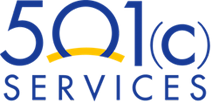
Building Clarity, Accountability, and Trust with Solid Documentation
In any workplace, especially in nonprofits where resources are limited and responsibilities are wide-ranging, strong documentation is essential. It tells the story of how work gets done, how decisions are made, and how people are supported. Clear, consistent documentation protects the organization and empowers employees by creating a reliable, shared understanding.
The Benefits of Thoughtful Documentation
Good documentation serves many purposes:
- Creates accountability. Written records clarify expectations, confirm conversations, and provide a reference point when questions arise.
- Supports employee development. It helps track progress, identify patterns, and highlight growth opportunities.
- Promotes consistency. With accurate records, leadership transitions and team changes are easier to navigate.
- Reduces legal risk. If concerns or disputes come up, strong documentation can demonstrate fair and consistent treatment.
- Improves communication. Documenting key interactions helps everyone stay aligned and avoid misunderstandings.
What Strong Documentation Looks Like
 Effective documentation is not about volume, it’s about clarity, purpose, and fairness. Strong documentation typically includes:
Effective documentation is not about volume, it’s about clarity, purpose, and fairness. Strong documentation typically includes:
- A clear description of the event, conversation, or decision
- Relevant context (who was involved, what prompted the discussion, what was agreed upon)
- Objective, factual language that avoids opinions or assumptions
- A summary of any expectations, deadlines, or next steps
- A respectful tone that reflects professional intent and care
This kind of documentation can apply to performance conversations, disciplinary actions, accommodation requests, interviews, investigations, meetings, and more.
Final Thought
If documentation is unclear, inconsistent, or missing, it can lead to confusion and mistrust. When it is handled with care, it builds stronger relationships, better decision-making, and a more resilient organization.
Regardless of size, nonprofit organizations are held to the same documentation standards as any other employer. In the eyes of the law, if it’s not documented, it didn’t happen. Intentional, well-documented practices build trust, consistency, and legal readiness, which all make up foundations of a strong workplace culture. In short, good documentation is good leadership.
Download our Supervisor Documentation Checklist to ensure your notes are clear, consistent, and legally sound—an essential tool for building workplace trust.
If you’d like to learn more, join us live on June 26th for the webinar Documenting Employment Events: Not in writing? Never Happened! or visit our Resource Library to access on-demand webinars.
About Us
For more than 40 years, 501(c) Services has been a leader in offering solutions for unemployment costs, claims management, and HR support to nonprofit organizations. Two of our most popular programs are the 501(c) Agencies Trust and 501(c) HR Services. We understand the importance of compliance and accuracy and are committed to providing our clients with customized plans that fit their needs.
Contact us today to see if your organization could benefit from our services.
Are you already working with us and need assistance with an HR or unemployment issue? Contact us here.
The information contained in this article is not a substitute for legal advice or counsel and has been pulled from multiple sources.
(Images by Stockexpert and Aukid)




